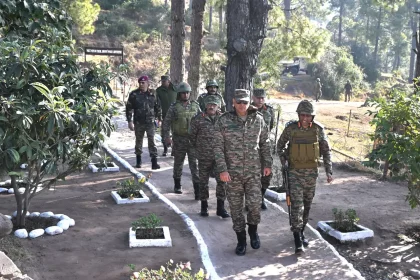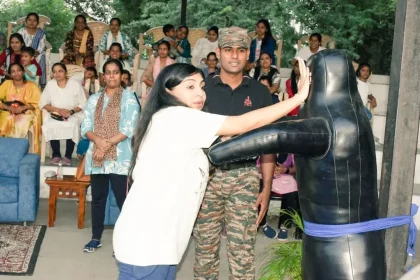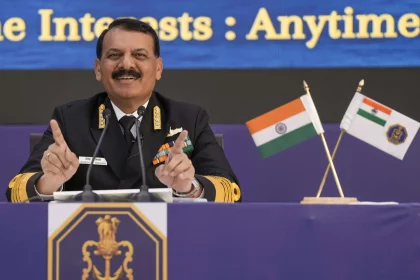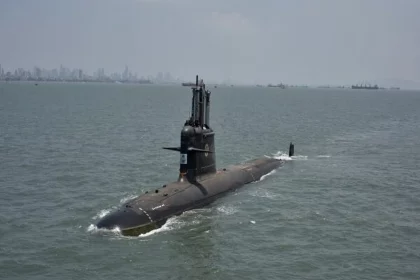Lt Gen Prasanna Kishore Mishra Reviews Operational Preparedness Along LoC in Bhimber Gali Sector
White Knight Corps Chief reviews LoC readiness, stresses vigilance and operational excellence.
Lt Gen Dhiraj Seth Reviews Operational Readiness of Desert Sector Logistics Unit
Southern Command Chief reviews Desert Sector logistics, commends efforts to enhance operational readiness.
Major General Puneet Doval Appointed Commandant of High Altitude Warfare School, Gulmarg
Seasoned officer Maj Gen Puneet Doval takes command of HAWS to bolster India’s mountain warfare readiness.
Sindh Vijeta Brigade Conducts Women Safety & Self-Defence Workshop at Jamnagar
Workshop equips women with vital self-defence skills and safety awareness.
Indian Navy Eyes First Rafale Jets by 2029; Project 75I Submarine Contract Nearing Finalisation, Says Admiral Tripathi
First four Rafale jets expected by 2029; Project 75I submarines contract in final stages.
Indian Navy to Commission INS Aridhaman, Third Indigenously Built Nuclear Submarine
INS Aridhaman to enhance India’s nuclear submarine strike capability and survivability.






